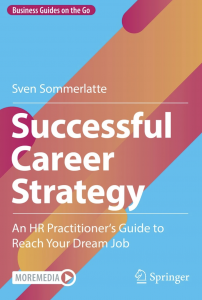This article provides an overview on the key principles of career management. You will find concrete examples and dynamic graphical illustrations. Those could help you define your personal career strategy: setting your career ambition, broadening your experience base in view of your targeted position and going for the most promising opportunities.
I have recently published a number of videos on career management. Since, more and more people engage with me in conversations concerning their career development, seeking advice on how to define their career objectives, how to assess their experience base or how to identify career opportunities. Based on these discussions I have summarized the key principles for successful career management in this article. These career management principles are:
1) Define the vision and ambition for your career
2) Assess your experience gap in view of the targeted position
3) Constantly monitor career opportunities
4) Be bold and indicate interest, even if you have to stretch into the new role
Before outlining each one of these 4 principles more in detail, I would like describe an example. As you see in the illustration here below, I will talk about a person who has made 3 career steps so far. These steps are indicated by the yellow lines. You can see that this person has also defined her/his career ambition, which is indicated by the white star.

A number of career opportunities come up, which are represented here with colored lines. But none of these opportunities are accessible for the person we talk about.

The blue line below would be accessible, but it does not really go in the direction of the defined career ambition. The opportunity indicated by a red line, would be much better.

But I am still not sure if it would be the optimal choice, because we also need to take the experience base into account (see the blue triangle). As we can see, the experience base of that person is still quite narrow. This is normal, because that person is still standing at the beginning of her/his career.

A lateral move, as indicated with the orange line in the illustration here below would allow expanding the experience base. Such a lateral move may allow gaining new product knowledge, acquiring new functional expertise or adding an international experience. This expansion should be done in view of the skills and experience that the targeted position requires.

Once the experience base is broad enough, the person may be able to reach her/his career ambition in two additional career steps, as we can see in this illustration here.

So let’s summarize the 4 principles of career management:
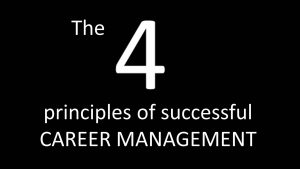
1st Principle: Define your career ambition!
As we could see above, a clearly defined vision of where we want to go with our career is critical. You will be able to make the right career decisions, if you know where you want your career to go.
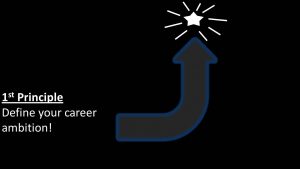
Once that is defined, you will be able to assess, if a career opportunity is attractive or not in view of your ambition. Some opportunities may look attractive, but may not go in the right direction. You can read more about setting the vision for your career in this article on how to define your personal career strategy.
Your career ambition should be connected to your deep desire. This deep desire is usually linked to what you enjoy doing and what you have always been good at. It is connected to your strength and to the activities that you find naturally motivating and rewarding. It is important to connect to your deep desire, because this will help you clarify what you truly aspire to and what direction you want to give to your career development. This is a link to an article on this topic, in case you wish to learn more about connecting to your deep desire.
2nd Principle: Expend your experience base
Once you have defined the position that you wish to reach in your career, you should assess what skills and experience are required for that role. To do so, you should first assess your current experience base. You can then measure the gap between where you stand today and those required skills and experiences. This will allow you directing our career development in such a way, that you expand your base in view of those requirements.
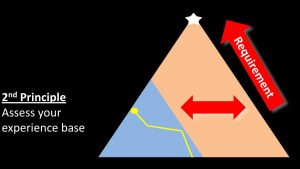
You may need for example to gain broader product experience, or to acquire additional functional skills or to obtain an international experience. Very often, a lateral move is the best way to broaden your experience base. Here is the link to an article that I have written specifically on this topic of the experience base.
3rd Principle: Monitor constantly what new opportunities come up
New opportunities my come up at any time. Many of these opportunities will probably be out of reach. Others may not go in the right direction, as we saw in the earlier example. But some opportunities should be considered and we should therefore be constantly vigilant so that we can identify those early enough. The French have a great word for that vigilance. They talk about being “aux aguets”. The best translation is to be alert or to be watchful. To be “aux aguets” is mostly used for animals that are in the hunting mode. They are full of energy and focused, ready to jump if they identify a target. The ancient Greek word of Kairos is another good way of describing this moment, where we can grab an opportunity. Kairos means the right, critical, or opportune moment.
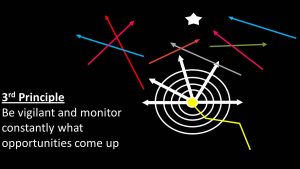
I believe that there are many missed opportunities, where people did not pay enough attention to what is going on in their environment, because they expect that they will be called, if there is something interesting for them (“management or HR will tell me, if they believe that I would be a good candidate for this or that role”). But in reality, we are the engineers of our own careers. We are ultimately responsible for it. Not HR and also not our managers. They are certainly here to support our career development and to provide the necessary advice. But we cannot delegate the responsibility for our own career to them. This is the link to an article that outlines that responsibility we have for our career: you are the CEO of your own career.
It is therefore highly recommended to engage with people about your career development. You should be proactive, reach out, share your career perspective and seek feedback from key stakeholders who can support your development. Discuss your profile with your manager to collect her/his feedback. The clearer you are of where you wish to go, the easier these conversations will be. Make your career development a top priority for yourself, not something that is at the bottom of the pile and that will come after all the other topics are dealt with. Otherwise opportunities may have come by in the meanwhile that you may have missed.
4th Principle: Be bold! Indicate interest for opportunities, even if there is a gap.
Opportunities may come up where you believe that there is a gap between your current experience base and the skills or the experience that is required. In case that gap is very significant, it might not make much sense to apply. But in some other cases, you might be able to bridge the gap and stretch into the new role, if you are a bit audacious.
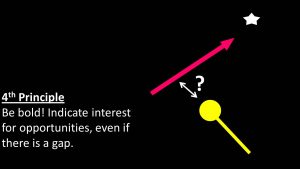
Attractive opportunities might be available, if you are ready to put in some extra efforts at the beginning of the new assignment and to demonstrate a high level of motivation. In these cases, it might be worth applying and indicating interest for the role. You might discover that there are no stronger candidates available and that you are given a chance! Such stretched assignments can become a real career accelerator and turning point in your career!

There is nothing wrong to apply for a position, even if you know that there is a certain gap. This will in the contrary send a signal that you have a clear ambition and it will place you in a better position for the next attractive opportunity, even if this one does not work out directly. Be bold!
More information in my book:
Sven Sommerlatte : Successful Career Strategy – An HR Practitioner’s Guide to Reach Your Dream Job (Springer, June 2023). ISBN: 978-3-662-66790-3
